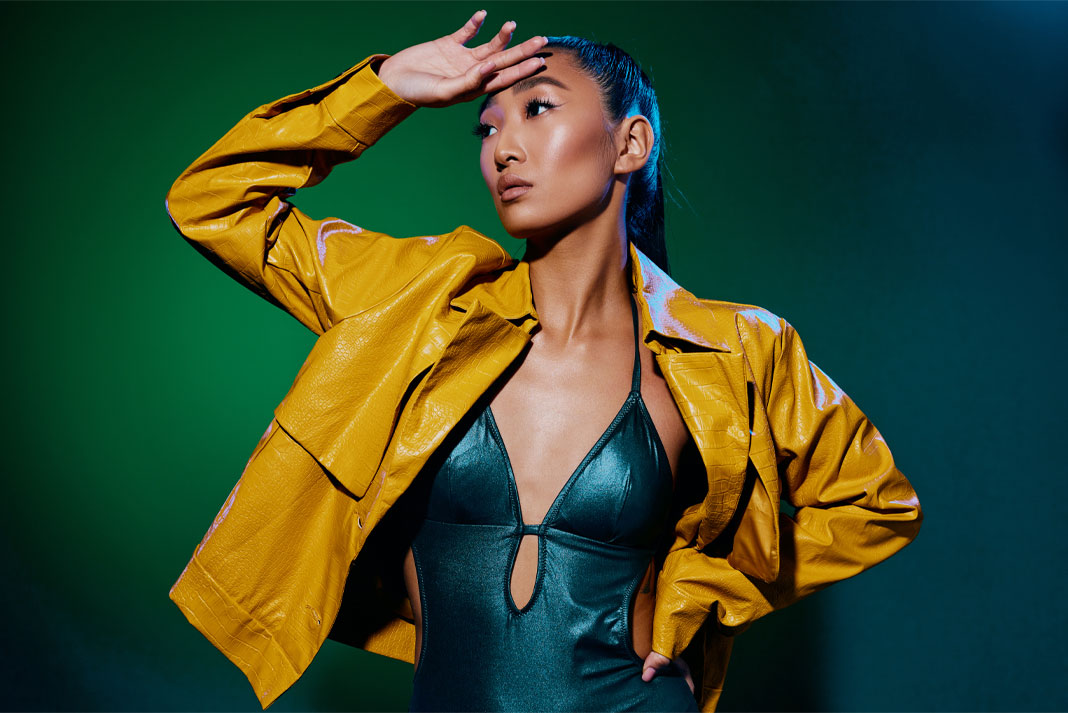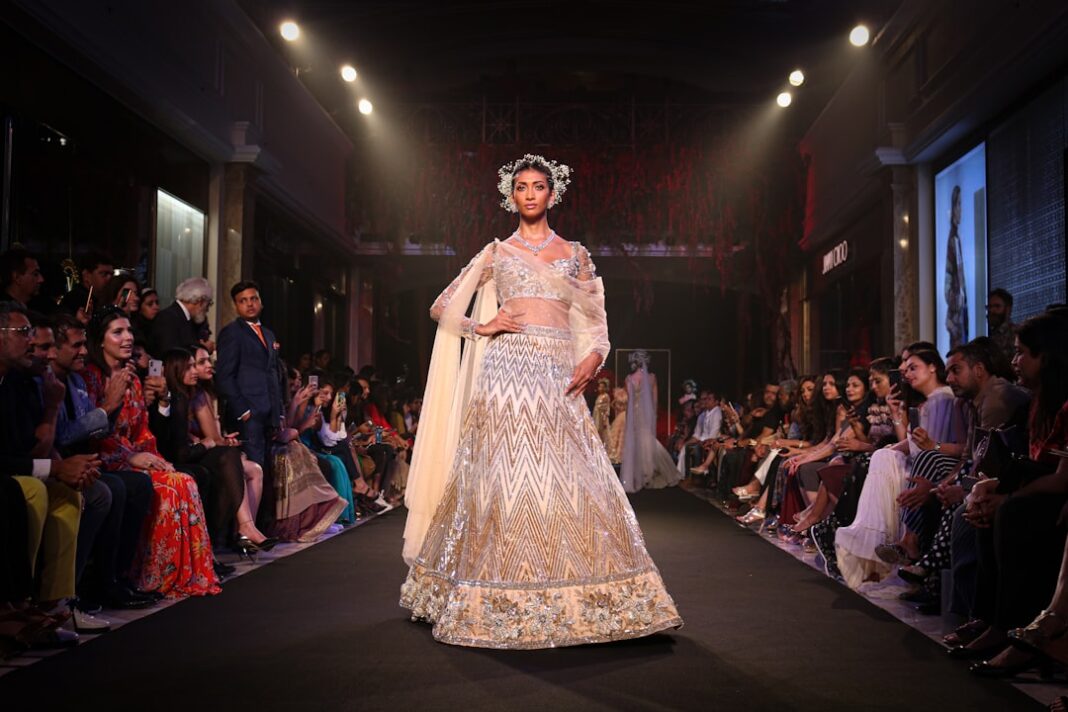Fashion modelling is a competitive industry focused on showcasing clothing, accessories, and beauty products.
Models display the latest trends and designs from fashion designers and brands, embodying the essence of the clothing and conveying specific moods or messages to the audience. This dynamic field plays a significant role in shaping public perception and consumption of fashion.
The history of fashion modelling dates back to the late 19th century when Charles Frederick Worth, considered the father of haute couture, introduced live models to showcase his designs. Since then, fashion modelling has become an integral part of the industry, with models often becoming iconic figures and trendsetters. In recent years, fashion modelling has expanded beyond traditional runway shows to include print and digital media, as well as social media platforms.
It has evolved into a global phenomenon, featuring models from diverse backgrounds and cultures. The industry continues to captivate audiences and inspire creativity in the world of fashion.
Key Takeaways
- Fashion modelling involves showcasing clothing and accessories to promote brands and designers.
- A fashion model’s role is to bring life to the designer’s vision and create a connection with the audience.
- The fashion modelling industry is highly competitive and requires dedication, hard work, and resilience.
- Requirements for fashion modelling include height, body measurements, and a strong, versatile portfolio.
- Types of fashion modelling include runway, editorial, commercial, plus-size, and fitness modelling.
The Role of a Fashion Model
The Art of Bringing Garments to Life
Fashion models are, in essence, living mannequins that infuse life and personality into the garments they wear. They are responsible for showcasing the designer’s vision and bringing it to life through their movements, expressions, and poses.
Ambassadors of Fashion Brands
Fashion models are also expected to embody the brand’s image and values, serving as ambassadors for the fashion labels they represent. They are often seen as trendsetters and influencers, with the power to shape consumer preferences and drive sales.
A Multifaceted Profession
In addition to their role as visual storytellers, fashion models also serve as muses for designers, photographers, and stylists. Their unique features and personalities can inspire creative collaborations and help bring a designer’s vision to fruition. Fashion models are also expected to maintain a certain level of professionalism and discipline, as they often work long hours and travel extensively for assignments. They must be adaptable and versatile, as they may be required to work in various settings, from high-end fashion shows to commercial photo shoots. Overall, the role of a fashion model is multifaceted, requiring a combination of physical grace, charisma, and business acumen.
The Fashion Modelling Industry
The fashion modelling industry is a multi-billion dollar global enterprise that encompasses various sectors, including high fashion, commercial modelling, and niche markets. It is a fast-paced and competitive industry that is driven by trends, consumer demand, and the constant need for innovation. The industry is comprised of a diverse range of professionals, including models, agents, photographers, stylists, makeup artists, and designers, all working together to create compelling visual narratives that resonate with audiences.
High fashion modelling is often associated with luxury brands and designer labels, with models walking the runways of prestigious fashion weeks in major cities such as New York, Paris, Milan, and London. These models are typically tall, slender, and have distinctive features that make them stand out on the runway. Commercial modelling, on the other hand, focuses on promoting everyday products and services through print and digital media.
This sector of the industry is more inclusive and diverse, featuring models of all shapes, sizes, and backgrounds. Niche markets within the fashion modelling industry cater to specific demographics or interests, such as plus-size modelling, fitness modelling, or alternative fashion. The fashion modelling industry is also heavily influenced by technology and social media, with platforms like Instagram and TikTok playing a significant role in shaping trends and influencing consumer behavior.
Models with large social media followings have become sought-after by brands for their ability to reach a wider audience and drive engagement. As a result, the industry has become more democratized, allowing aspiring models to build their own personal brands and gain visibility without traditional agency representation.
Requirements for Fashion Modelling
Becoming a successful fashion model requires more than just good looks. While physical appearance is undoubtedly important in the industry, there are several other qualities and skills that are essential for aspiring models to possess. Height is often a key requirement for high fashion modelling, with female models typically needing to be at least 5’9″ tall and male models at least 6’0″ tall.
In addition to height, models are expected to have well-proportioned bodies with clear skin, healthy hair, and a photogenic face. Aside from physical attributes, aspiring models should also possess strong interpersonal skills, professionalism, and resilience. The ability to take direction well, work under pressure, and adapt to different environments is crucial for success in the industry.
Models must also be disciplined in maintaining their physical fitness and overall well-being, as their appearance is their primary asset. While formal education is not a prerequisite for fashion modelling, having a good understanding of fashion trends, industry terminology, and business etiquette can be advantageous for aspiring models. In recent years, there has been a growing demand for diversity and inclusivity in the fashion modelling industry.
Brands and agencies are increasingly seeking models from different ethnicities, body types, ages, and gender identities to better reflect the diversity of their consumer base. As such, aspiring models who represent underrepresented groups have an opportunity to break into the industry and make a meaningful impact.
Types of Fashion Modelling
Fashion modelling encompasses a wide range of categories that cater to different market segments and purposes. The most well-known type of fashion modelling is high fashion or runway modelling, which involves showcasing designer collections on the catwalk during fashion weeks or other major events. High fashion models are typically tall, slim, and have striking features that make them stand out on the runway.
They are often seen as muses for designers and play a crucial role in setting trends and creating buzz around new collections. Commercial modelling focuses on promoting everyday products and services through print and digital media such as magazines, billboards, television commercials, and online advertisements. This type of modelling is more inclusive and diverse, featuring models of various ages, sizes, ethnicities, and backgrounds.
Commercial models are often sought after for their relatable appeal and ability to connect with a wider audience. In addition to high fashion and commercial modelling, there are niche categories within the industry that cater to specific interests or demographics. Plus-size modelling has gained prominence in recent years as brands seek to embrace body positivity and inclusivity in their marketing campaigns.
Fitness modelling focuses on promoting activewear, sports equipment, and wellness products through images that convey health and vitality. Alternative fashion modelling encompasses unconventional styles such as goth, punk, or steampunk, appealing to niche subcultures and alternative lifestyles.
The Impact of Fashion Modelling
The Aspirational Figure: Shaping Perceptions of Beauty
Fashion modelling has a profound impact on society by shaping perceptions of beauty, influencing consumer behavior, and driving cultural trends. Models serve as aspirational figures who embody ideals of style, elegance, and glamour. They inspire creativity in the fashion industry by bringing designers’ visions to life through their physical presence and charisma.
Challenging Traditional Beauty Standards
Fashion models also play a crucial role in challenging traditional beauty standards by promoting diversity and inclusivity in their work. The influence of fashion modelling extends beyond aesthetics to encompass social issues such as body positivity, gender equality, and sustainability. Models who advocate for these causes through their work can spark important conversations and drive positive change within the industry.
Influencing Consumer Behavior and Driving Economic Growth
Additionally, fashion models have the power to influence consumer behavior by endorsing products and brands through their endorsements on social media platforms. Fashion modelling also has economic implications as it drives consumer spending on clothing, accessories, beauty products, and lifestyle brands. The visibility of models in advertising campaigns can significantly impact sales and brand perception. As such, fashion models are instrumental in shaping consumer preferences and driving trends within the retail industry.
The Future of Fashion Modelling
The future of fashion modelling is likely to be shaped by technological advancements, changing consumer preferences, and evolving societal values. With the rise of digital media and e-commerce platforms, there will be increased opportunities for models to engage with audiences directly through social media channels and virtual experiences. Models with strong personal brands will have greater influence in shaping trends and driving consumer engagement.
The demand for diversity and inclusivity in fashion modelling is expected to continue growing as brands seek to connect with a wider range of consumers. Models from underrepresented groups will have more opportunities to break into the industry and challenge traditional beauty standards. Additionally, there will be an increased focus on sustainability within the fashion industry, with models playing a role in promoting ethical practices and environmentally conscious brands.
As the fashion industry becomes more globalized, there will be greater opportunities for models from diverse cultural backgrounds to gain visibility on an international scale. The rise of emerging markets in Asia, Africa, and South America will create new avenues for models to showcase their talent and appeal to a broader audience. In conclusion, fashion modelling is an influential force within the fashion industry that continues to evolve with changing societal values and technological advancements.
Models play a crucial role in shaping trends, promoting diversity, driving consumer engagement, and inspiring creativity within the industry. The future of fashion modelling holds exciting possibilities for aspiring models who seek to make an impact on a global scale.
FAQs
What is fashion modelling?
Fashion modelling is the act of showcasing clothing, accessories, and other fashion items for the purpose of advertising and promoting them to consumers. Fashion models are hired to display and promote the latest trends and designs in the fashion industry.
What are the requirements to become a fashion model?
To become a fashion model, individuals typically need to meet certain physical requirements such as height, weight, and body measurements. They also need to have a strong and unique look that can help them stand out in the competitive fashion industry.
What are the different types of fashion modelling?
There are various types of fashion modelling, including runway modelling, editorial modelling, commercial modelling, plus-size modelling, and fitness modelling. Each type of modelling has its own specific requirements and opportunities within the fashion industry.
What is the role of a fashion model?
The role of a fashion model is to effectively showcase and promote fashion products and designs through various mediums such as runway shows, photo shoots, and promotional events. Fashion models are responsible for bringing the designer’s vision to life and capturing the attention of consumers.
How do fashion models impact the fashion industry?
Fashion models play a crucial role in shaping and influencing the fashion industry by bringing attention to new trends, designs, and brands. They help create a connection between fashion designers and consumers, and their work can have a significant impact on the success of fashion products and brands.


